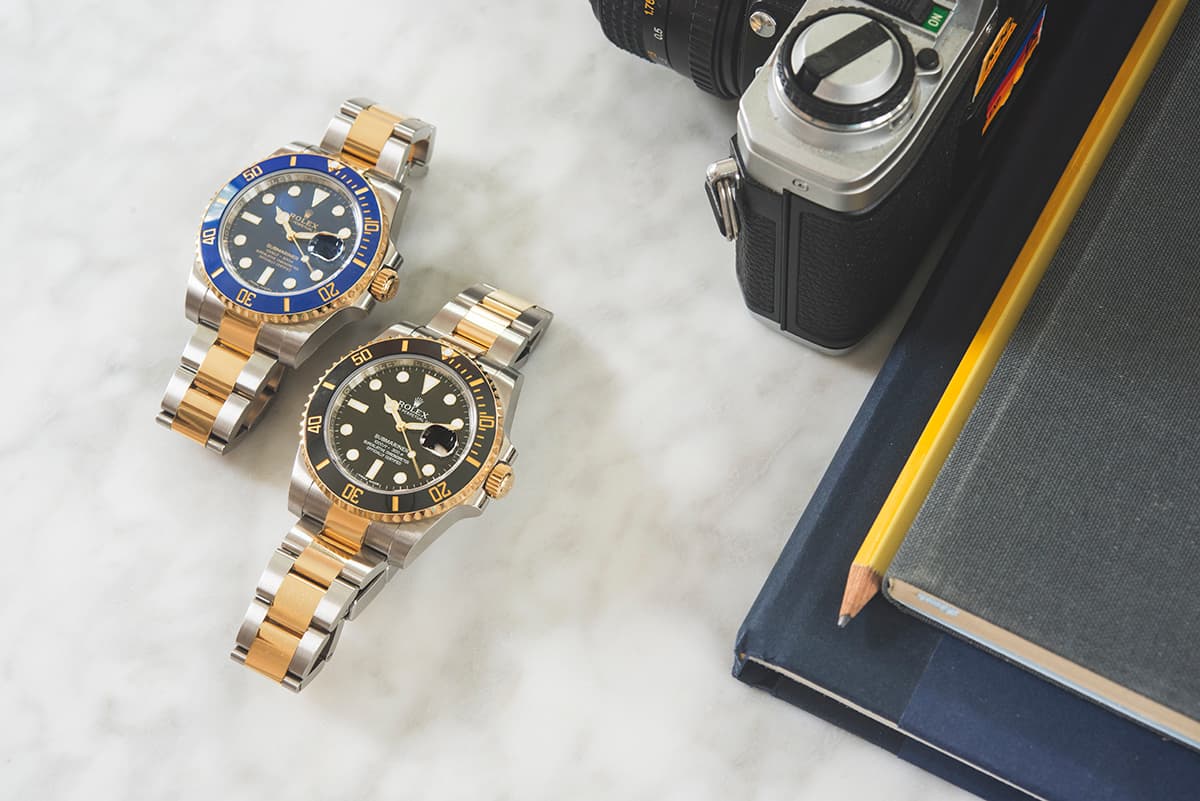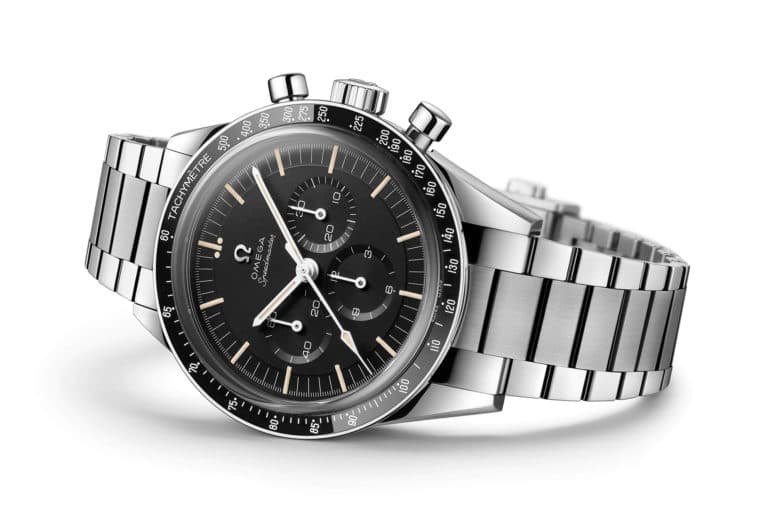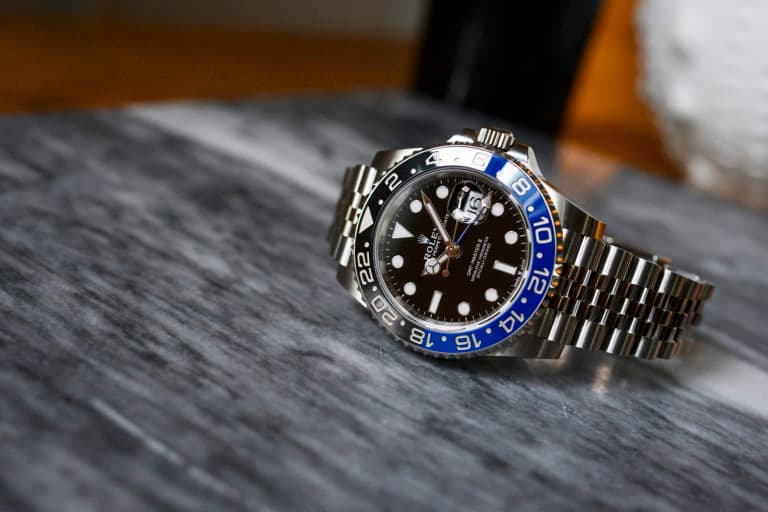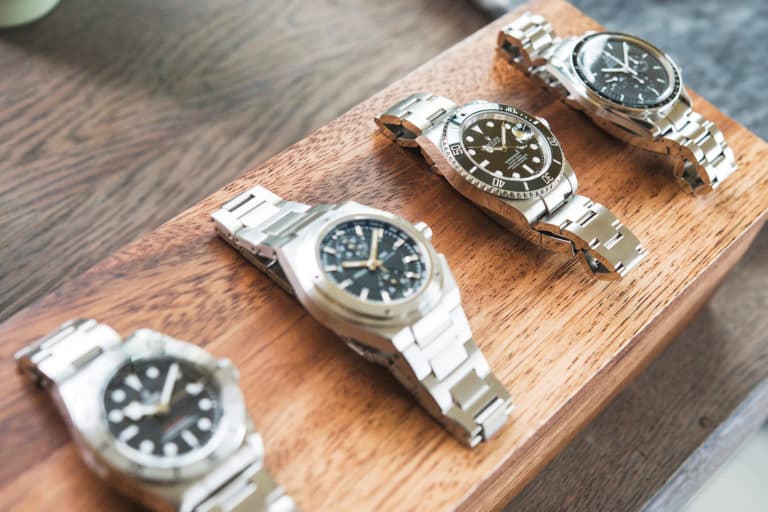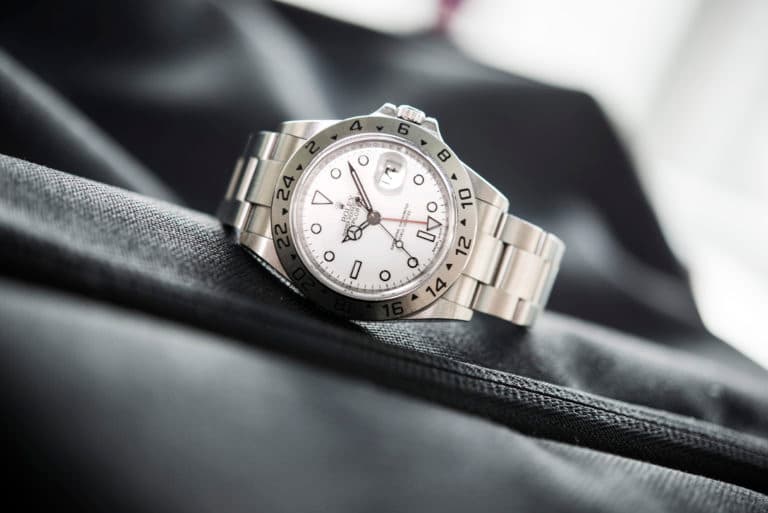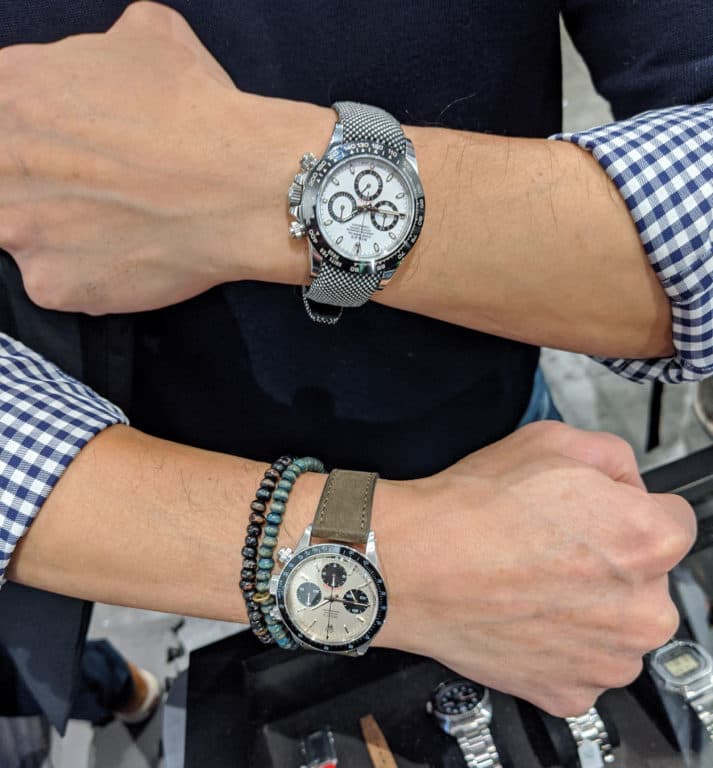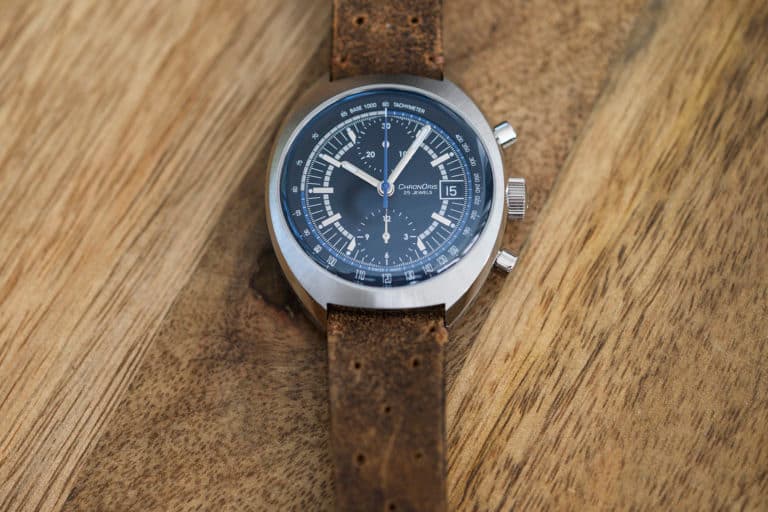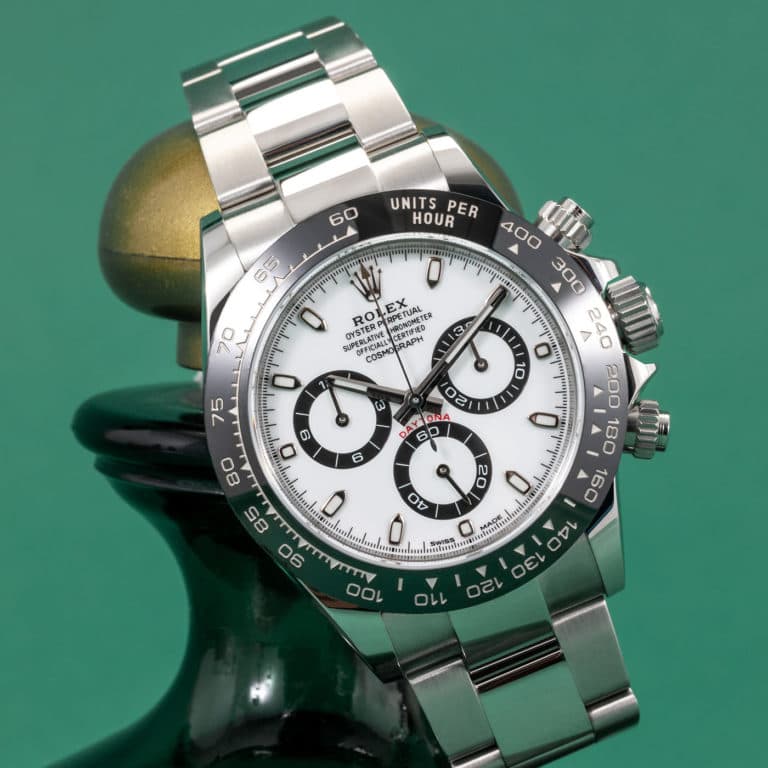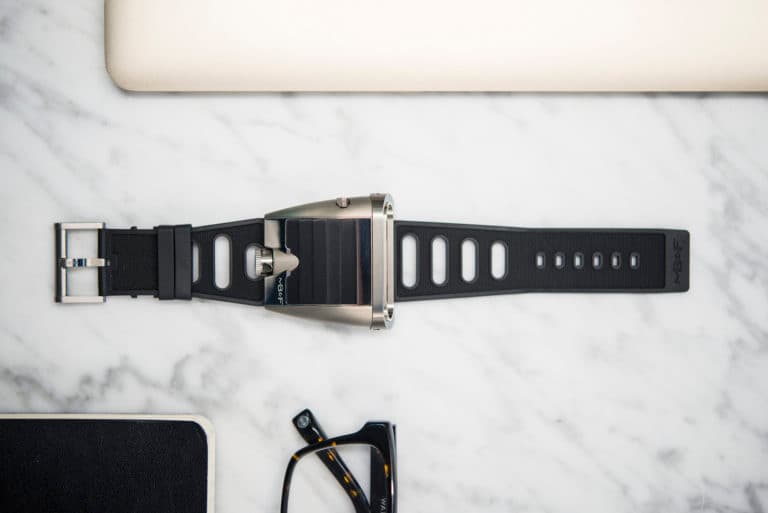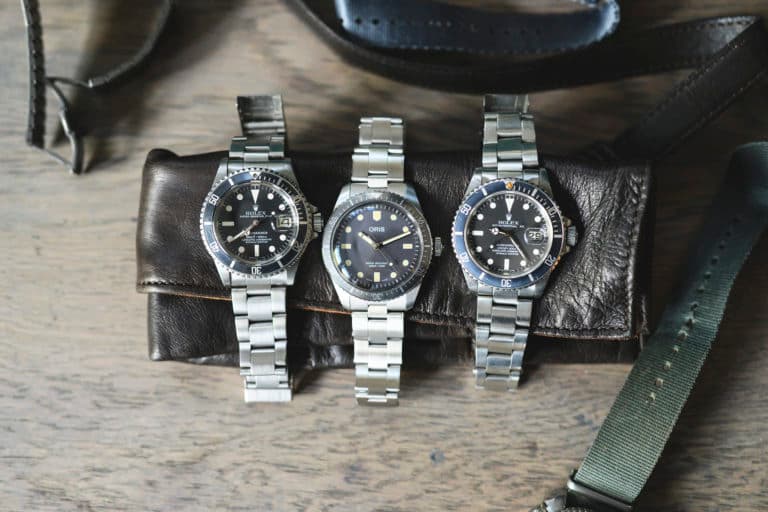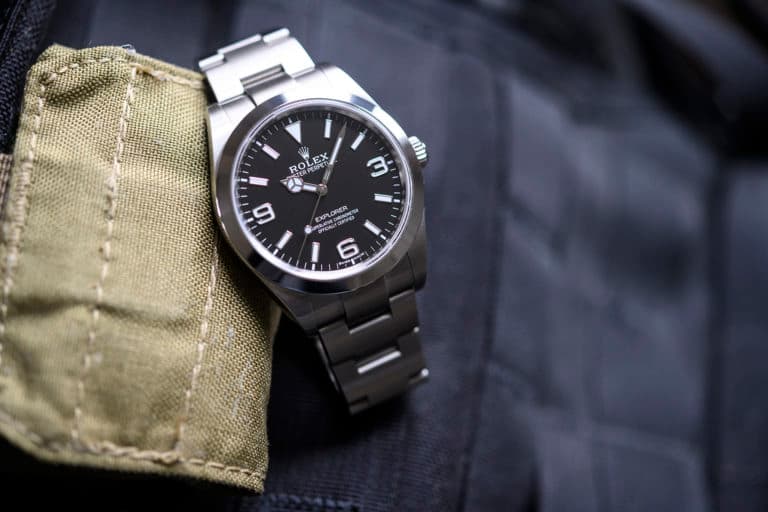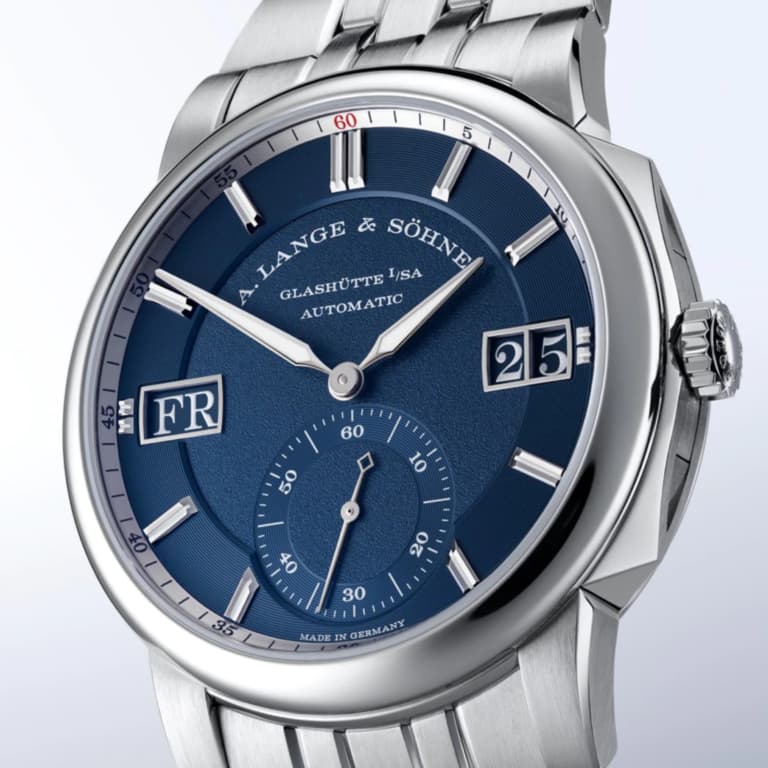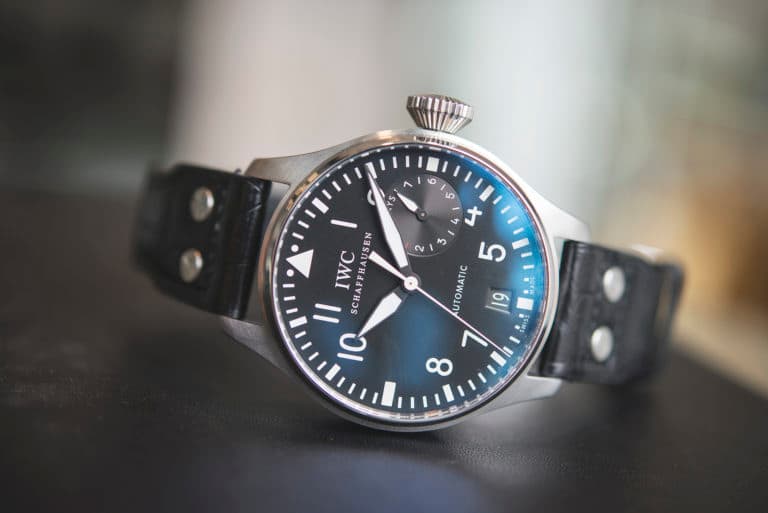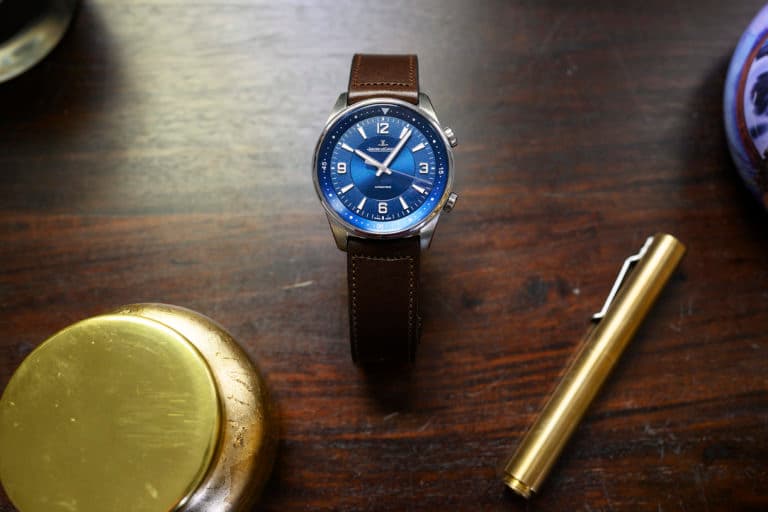If there’s one thing that splits the watch enthusiast community as much as the date complication, it’s two toned watches. Strong opinions occupy both camps, with reasonable and unreasonable misconceptions aplenty. Setting aside stereotypes, we thought it high time to take an objective look at two famous examples from the Rolex Submariner family, the reference 116613LB and 116613LN. These watches are historically relevant to Rolex, who first brought a mixed steel and yellow gold watch (something they call Rolesor) to market in the early 1930s. Today, the combination is mostly associated with styles of the ‘80s, however, and as all things fashion go, styles are cyclical, and this particular era is enjoying a major resurgence.
Gold and other precious metals have generally been reserved for the formal dress watches from brands up and down the spectrum, but exceptions do exist. The most famous encroachment of materials crossing boundaries is perhaps the very first Royal Oak introduced in 1972, which brought steel into the “luxury sport watch” category, and in the process defined a new genre. Today, precious metals can be found in “tool” watches and steel in high-end horology. Gold is no longer relegated to dress watches alone, but it certainly elevates regular tool watches to a unique mixture of practicality following fashion.
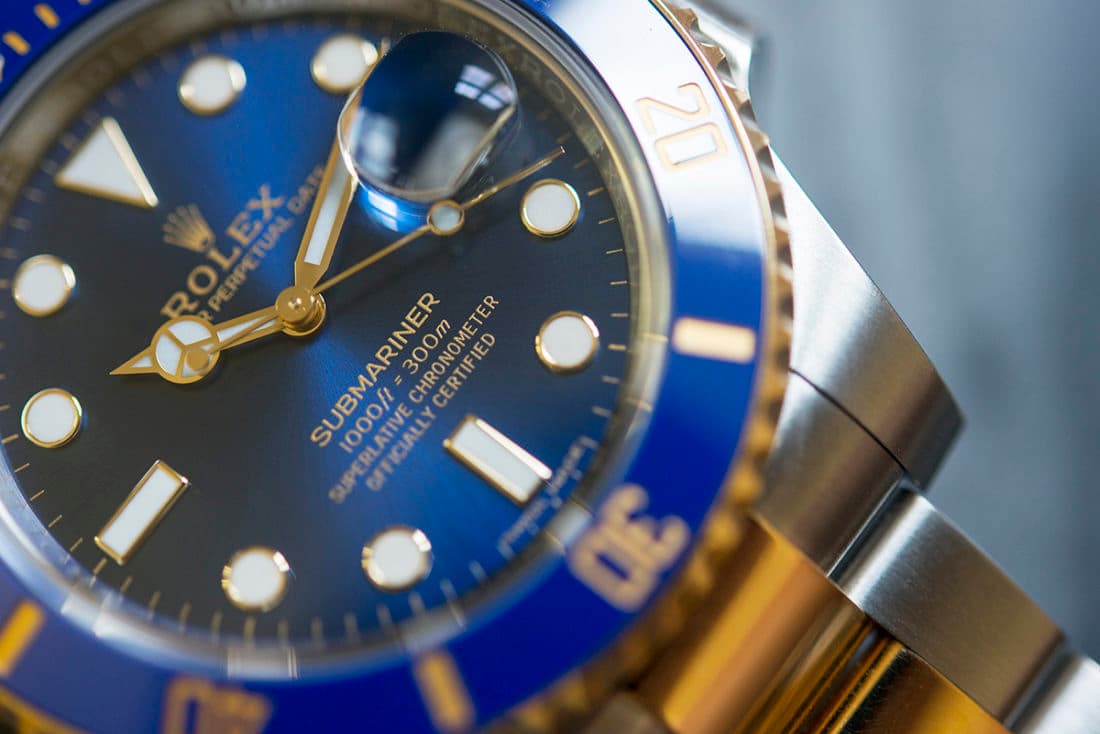
How does this all shake out in everyday wear? We spent some time with a range of Submariners, both all steel and Rolesor to see how things shake out on both ends of the wardrobe.
Origins of the Submariner
The Rolex Submariner may be the quintessential tool watch, but from the beginning, it was also designed to be usable as an elegant dress watch. This according to Rene P Jeanneret, the director of Rolex at the time, and an enthusiastic diver himself. Let’s pause for a moment to acknowledge that the history of the Submariner in and of itself is a topic that has entire books dedicated to it. Here’s a good one, if you’re so inclined. With that in mind, here’s a crash course in the history of one of the most prolific tool watches ever made.
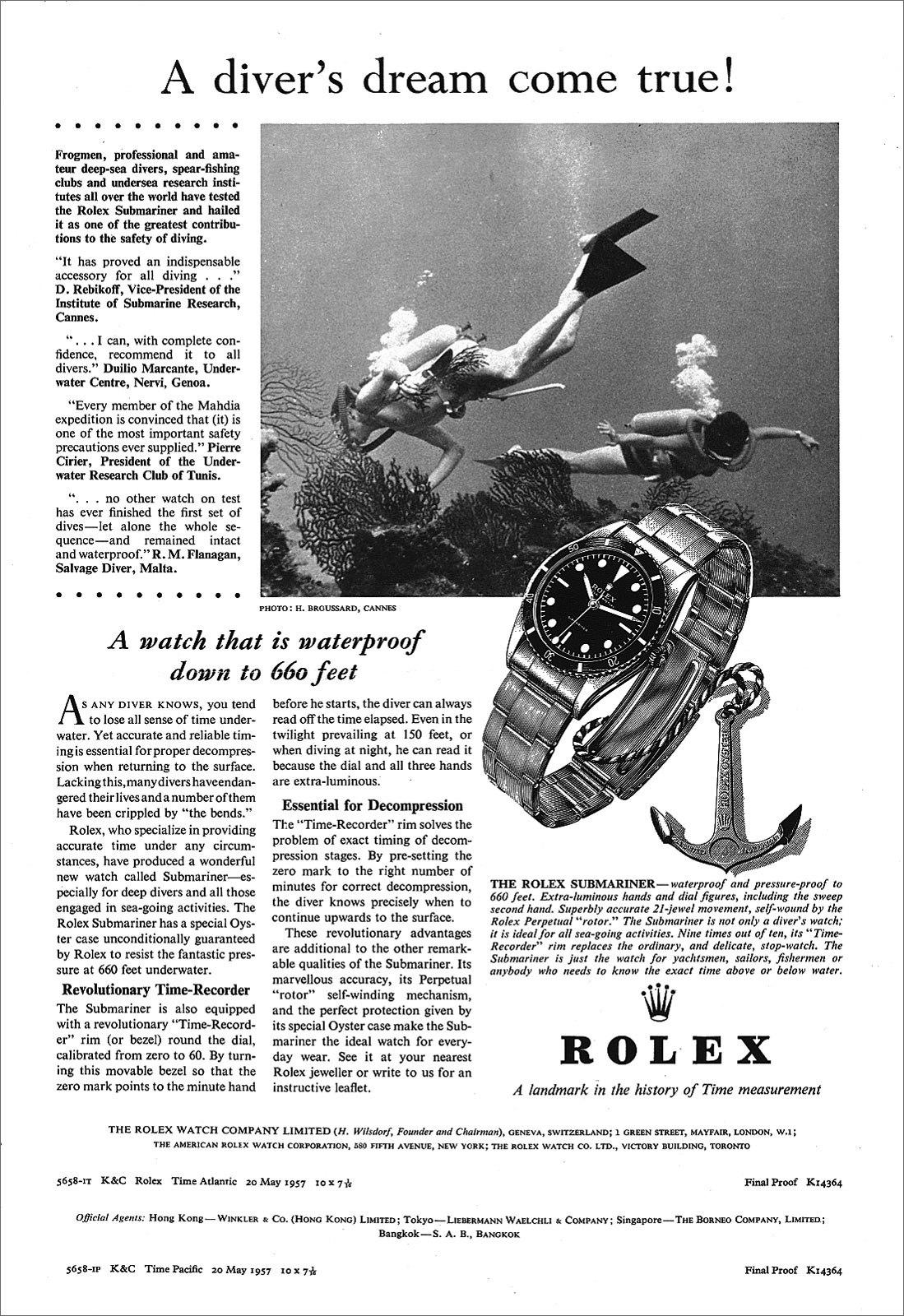
An early advert for the Rolex Submariner from 1957
Rolex debuted the Submariner in 1953 with the reference 6200 (or possibly the 6204), with the official presentation coming at the 1954 Baselworld fair. The Submariner used the Oyster case that Rolex had invented in 1926, inspired by the shell of an oyster and developed for the purpose of making the case waterproof. The original concept added a level of practicality to dress watches, and with the Submariner, it would be pushed further to protect the watch under the large volumes of pressure encountered while diving. Rolex was developing something called the Deep Sea Special alongside the Submariner for use in experimental dives, an effort that culminated in the survival of the watch strapped to the exterior of the Trieste in 1960. That’s a story for another day, but if your curious, this is well worth a read.

The Submariner was a clear step into sports watch territory for the luxury brand, and helped launch the likes of the GMT-Master and Milgauss, both purpose driven tool watches cast from the same mold as the Submariner. Hat-tip to the Explorer to getting that ball rolling. With feats such as the Trieste only reinforcing the brand’s reputation for building remarkably capable watches. The Submariner was a staple on recreational divers and Navy bases around the world, but make no mistake, as much as you can consider the watch a capable tool, it was also a luxury item that cost more than much of the rapidly expanding list of alternatives from the likes of Doxa, Seiko, and even sister brand Tudor.
Rolesor
By the 1980s the Submariner had established itself as one of Rolex’s most popular models, a new generation of references was in order to broaden the market share. In 1983 we get transitional references like the 16800, and even new dials on the 5513. Gone were the painted tritium hour markers, replaced by more precise plots with white gold surrounds. Other modernities like sapphire crystals and greater water resistance were also present. We also got an entirely new reference, the 16803, which featured a blue bezel, and a mix of stainless steel and yellow gold. It was the first appearance of a two-toned execution in the Submariner family, and it lasted for a short period of time, transitioning to the reference 16613 by 1988.
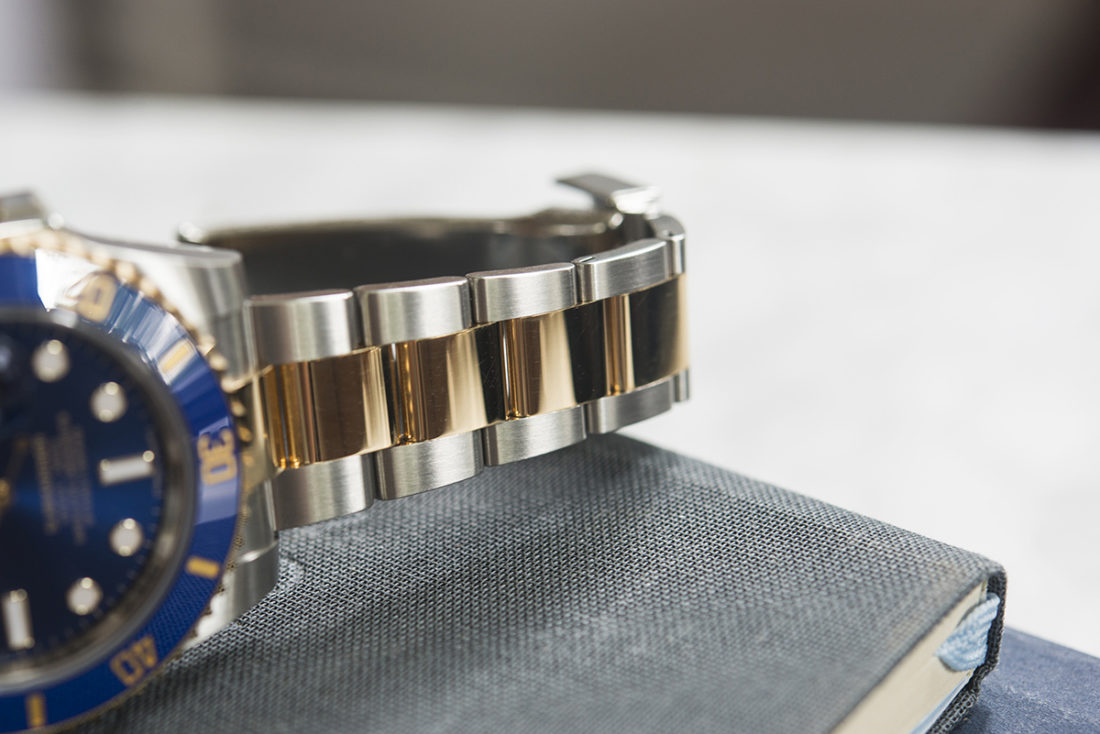
Heading into the ‘90s, Rolex embraced more variety across their entire catalog, and the Submariner was no exception. Not only did we get another two-toned option within the reference 16613, this time with a black dial and bezel, we saw the presence of diamonds alongside silver and gold dials. The Submariner had fully embraced its luxurious side, bridging the gap between pure tools like the Sea-Dweller and dress watches like the Day-Date. Today, that lineage is represented by the 116613LB, which pairs their own Oystersteel (904L) with 18ct yellow gold, along with a blue dial and blue Cerachrom bezel.
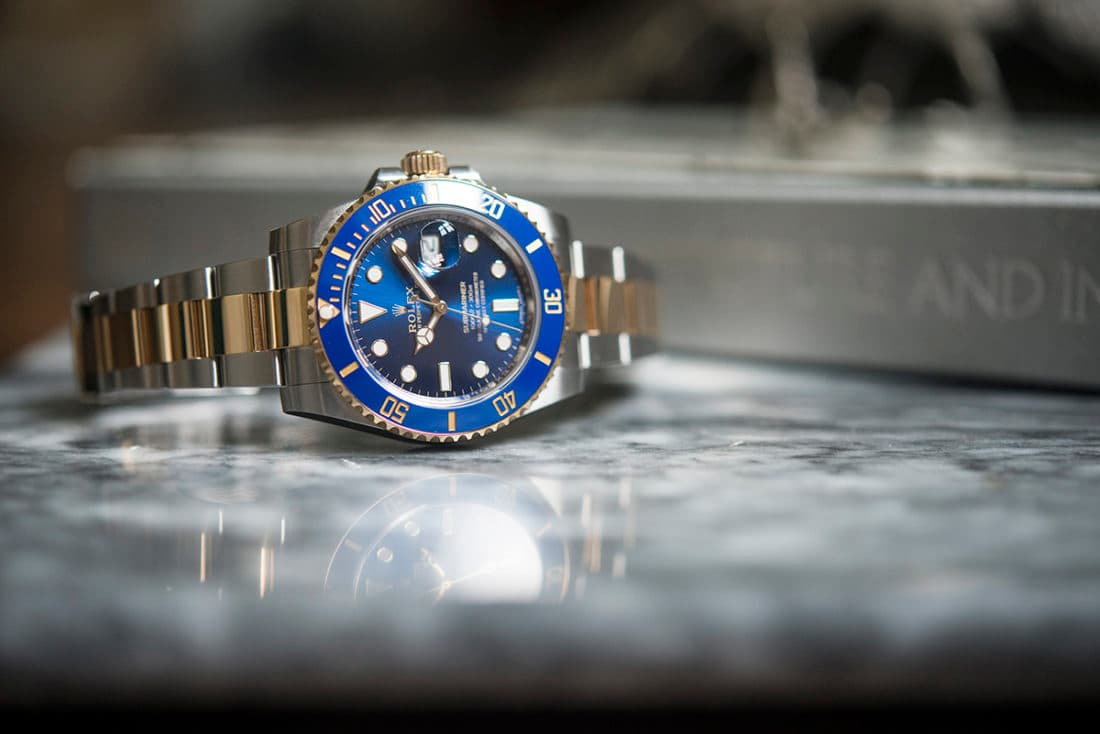
Given that two-toned Submariners have been around just as long as their all steel counterparts, has the name lost any of its lustre as a trusted tool? Or does the addition of precious metals undermine its status as a capable dive watch? If we’re being honest with ourselves, very few Submariners see more than a splash of water in their lifetimes these days. This is a luxury sport watch with tool watch roots. In fact, the Submariner is as much a cultural pillar as it is diver’s necessity. With appearances on the wrist of James Bond as portrayed by Sean Connery, who famously wore a reference 6538 in the films Dr. No, From Russia With Love, and Goldfinger, the Submariner became something else entirely, a style icon. In this context, embracing the two-toned construction takes on new meaning.
How does it stand up to modern trends? Better yet, how does it stand up to all steel Submariners currently being built by Rolex? We spent time wearing the 116613 to make sense of it.
Rolex Submariner 116613LB
The current generation of Submariner features a line-up that goes 8 references deep. These are the 6 digit reference Subs that are marked by their maxi dials, Cerachrom bezels, and 3135 calibers (except for the dateless reference 114060, which uses the 3130). The transition to this generation came via the 16610LV (aka Kermit), the 50th anniversary model that brought back the so called maxi dial (meaning larger hour markers, first seen on the ref 5513). In 2008, the Submariner officially made the jump into the 6 digit generation, and in 2009, the 116613LB (blue dial/bezel) and LN (black dial/bezel) were introduced.
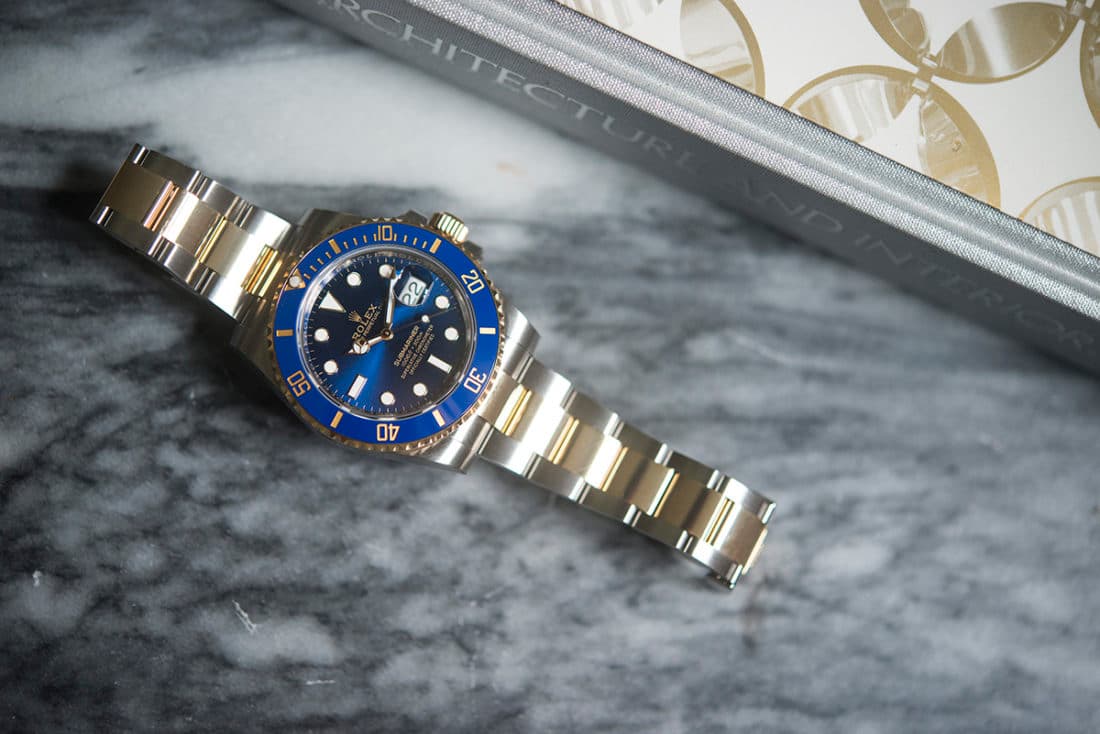
Within the 116613 models beats the tried and true Rolex caliber 3135. This is a movement that’s been in duty since 1988 in some form or another. Onlookers have been waiting patiently for the new caliber 3235 to make the jump into the Submariner family, but that hasn’t happened just yet (we presume it’s only a matter of time). The 3135 found here comes equipped with a Parachrom hairspring and is, of course, a “superlative chronometer officially certified” (it says so right on the dial). You get around 48 hours of power reserve along with a quickset date complication to round things out. No bells and whistles in sight.

While most Submariners enjoy a construction of brushed Oystersteel, the ref 116613 brings 18ct into the mix through the center link of the bracelet, the bezel surround, and the crown. Gold is carried onto the dial in the printing of the crown and all branding elements. Additionally, the hands and hour surrounds are plated in yellow gold. This, coupled with the deep blue bezel and blue sunburst dial make for an intense presence on the wrist, and a visual that shifts depending on the light.
On The Wrist
The Submariner has always been a very wearable dive watch, setting the standard for the genre since the ‘50s. The reference 116613 is no exception, wearing as easily as every other modern Sub with a muscle case. The most surprising thing you’ll notice about this watch upon wearing for the first time, is the heft over its steel brethren. It may not seem like much gold, but it brings a noticeably heavier presence on the wrist.
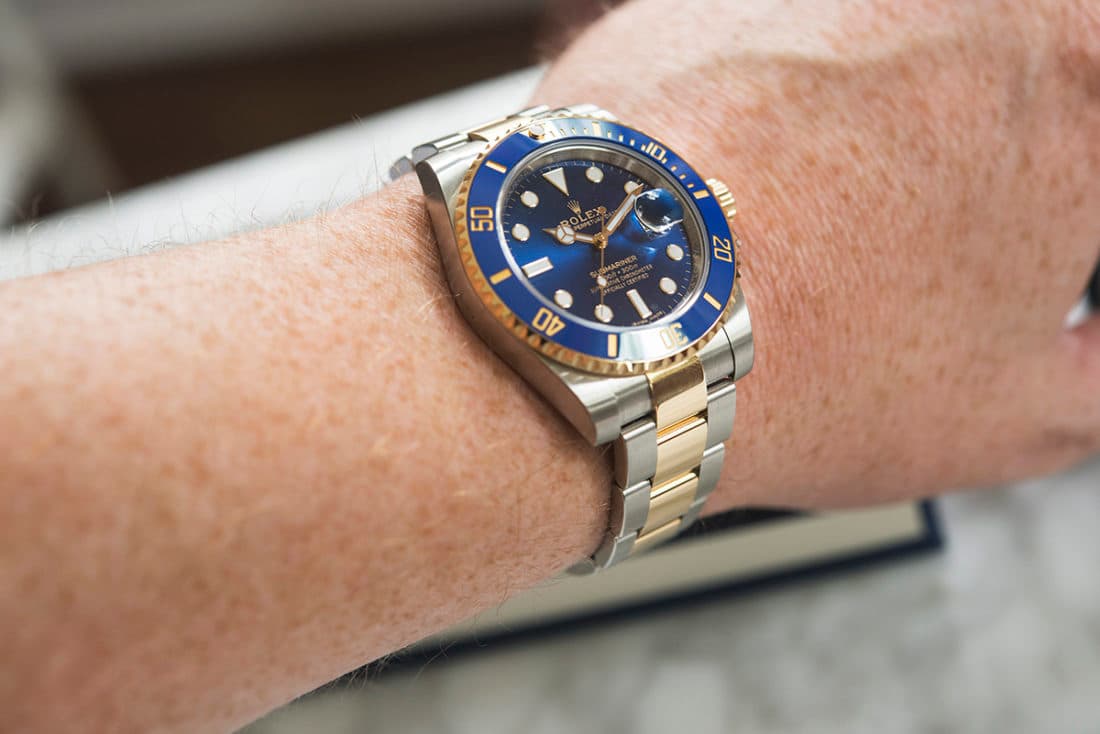
The case measures 40mm in diameter, and 12.75mm thick, however, the case slims up around the edges to under 6mm in height, allowing the center to sink into the wrist, and the edge to wear neatly. It’s a simple thing that makes such a big difference in daily wear. The glidelock clasp makes for easy adjustments on the fly, and will absolutely spoil you compared to clasps from other brands. This is a Sub, you already know all this. Let’s get to the gold.

The Two-Toned Submariner
Steel Submariners are famous for being easy to wear with pretty much anything in your wardrobe. They go as well with a t-shirt and jeans as they do buttoned up to the nines. Surprisingly, the two-toned references aren’t too far off of that bar. Certainly, this feels like a flashier watch, and that’s because it is. But, if you own it, walking around with a 116613 on your wrist accompanied by some black jeans, a plain white t-shirt, and a pair of Yeezys works surprisingly well. In fact, if you don’t wear a lot of flashy colors, this is your one opportunity to make a statement outside of popping a chain around your neck.
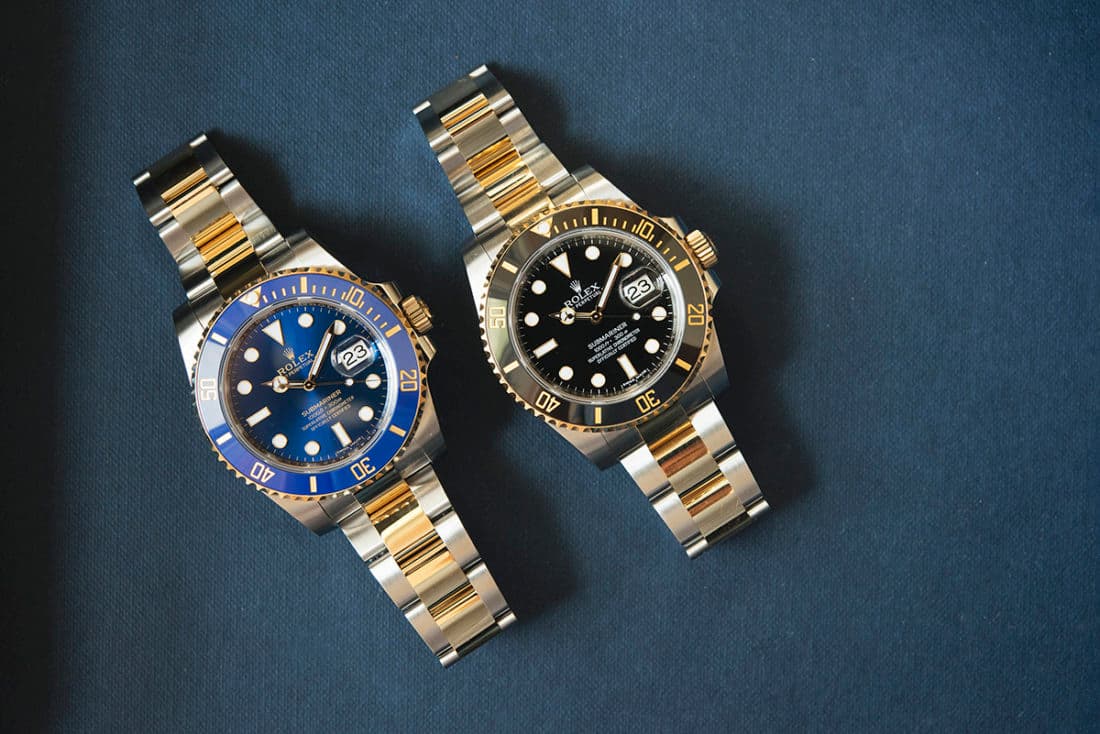
Two-toned watches need not be relegated to the older enthusiasts. These wear beautifully across a broad spectrum of styles no matter your particular subculture. True, the style won’t be for everyone, but you shouldn’t succumb to the stereotypes if you have even a passing interest. Plus, these have the added bonus of looking really, really good on brown leather straps (as this example from Tudor shows).
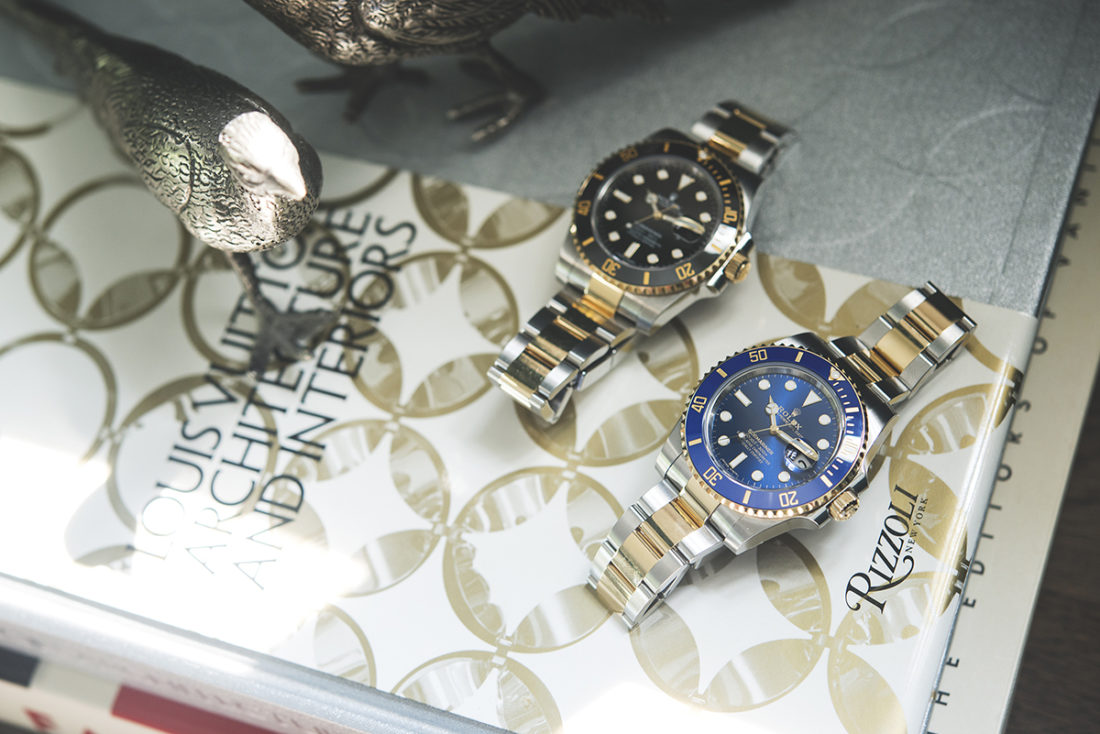
The two-toned Sub has its place in history, and we’d be well advised to give it a chance in a broader context to ensure it has a place in the future. From the get go, the Submariner has been both a luxury item and a tool watch, and the addition of gold is perhaps the ultimate expression of that. If you have an idealized vision of the Sub, planted firmly in the likes of the 6538 and 5512, you’re not wrong, but you’re missing the intention of the watch. The dressier ambitions of the Sub may not be as compelling as its contributions to COMEX or the military, but they are sown into the DNA regardless.
All we’re saying is, give it a chance.


